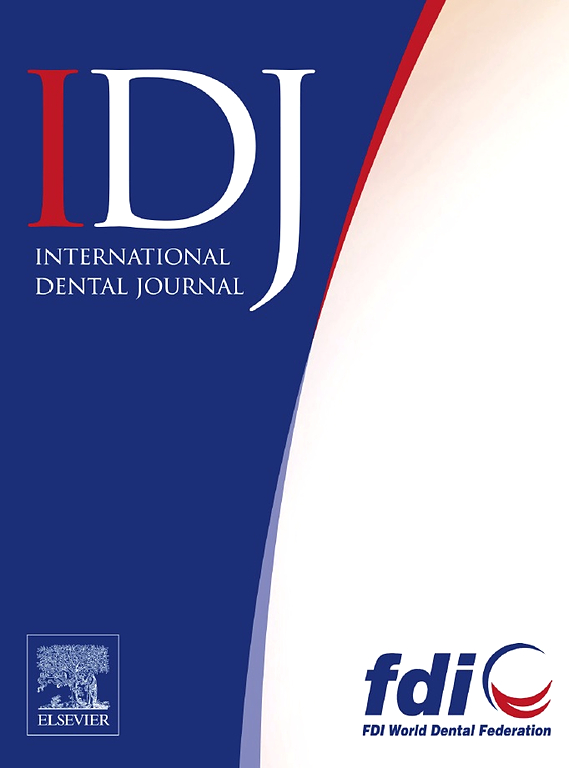体外培养成骨骨膜脱细胞过程的评价
IF 3.2
3区 医学
Q1 DENTISTRY, ORAL SURGERY & MEDICINE
引用次数: 0
摘要
该研究解决了对具有成骨特性的生物相容性、可吸收膜的需求,由于其固有的生长蛋白和柔韧性,提出了一种基于骨膜的支架。方法取绵羊颅骨皮肤,暴露结缔组织。取2 cm × 2 cm骨膜样品,分为4组进行不同的脱细胞处理:样品A(对照)不处理,样品B用100%酒精处理,样品C用100%酒精和1%次氯酸钠处理,样品D用100%酒精、1%次氯酸钠和0.1% SDS处理。对处理后的骨膜进行冻干和组织学评估,扫描电子显微镜与能量色散x射线光谱(SEM-EDS),拉曼光谱,细胞附着和活力研究。使用GraphPad Prism进行统计分析。结果IV组支架经100%酒精、1%次氯酸钠和0.1% SDS处理后,表现出最理想的组织工程特性。SEM-EDS分析显示了一个干净、无残留物、结构良好的胶原纤维网络,具有显著的孔隙度,而RAMAN光谱证实了胶原蛋白的三螺旋结构的保存。组织学检查显示完全脱细胞,没有细胞残余物。DAPI染色和SEM成像显示成骨细胞在24、48和72小时内附着和增殖强劲,表明其具有仿生特性。结论IV组脱细胞羊骨膜具有良好的生物相容性,支持成骨细胞生长,具有作为修复牙周骨病变的软性成骨支架的潜力。建议进一步的体内研究以证实其在引导骨再生治疗牙周缺损中的有效性。优化后的羊骨膜支架具有良好的成骨性能和生物相容性,是修复牙周骨缺损的潜在候选材料。它的可吸收性和结构完整性提供了优于合成膜的优点。这种新型膜符合可持续医疗保健和减少废物的全球目标。在临床应用前需要进一步的体内验证。本文章由计算机程序翻译,如有差异,请以英文原文为准。
Evaluation of a Decellularisation Process for Developing an Osteogenic Periosteum Membrane In Vitro
Introduction
The study addresses the need for a biocompatible, resorbable membrane with osteogenic properties, proposing a periosteum-based scaffold because of its inherent growth proteins and pliability.
Methods
The skin from the skull of a young sheep was removed to expose the connective tissue. A 2 cm x 2 cm periosteum sample was harvested and divided into 4 groups for different decellularisation treatments: sample A (control) was left untreated, sample B was treated with 100% alcohol, sample C was treated with 100% alcohol and 1% sodium hypochlorite, and sample D was treated with 100% alcohol, 1% sodium hypochlorite and 0.1% SDS. The processed periosteum was lyophillised and subjected to histological evaluation, scanning electron microscopy with energy-dispersive X-ray spectroscopy (SEM-EDS), RAMAN spectroscopy, cell attachment and viability studies. Statistical analysis was performed using GraphPad Prism.
Results
Group IV scaffold, treated with 100% alcohol, 1% sodium hypochlorite and 0.1% SDS, exhibited the most desirable characteristics for tissue engineering. SEM-EDS analysis revealed a clean, residue-free, well-structured collagen fibril network with significant porosity, while RAMAN spectroscopy confirmed preservation of collagen's triple-helical structure. Histological evaluation showed thorough decellularisation and the absence of cellular remnants. DAPI staining and SEM imaging demonstrated robust osteoblast attachment and proliferation over 24, 48 and 72 hours, suggesting its biomimetic property.
Conclusion
Decellularised ovine periosteum membrane from Group IV demonstrated biocompatibility and supported osteoblast growth, indicating its potential as a soft, osteogenic scaffold for repairing periodontal bone lesions. Further in vivo studies are recommended to confirm its effectiveness in treating periodontal defects for guided bone regeneration.
Clinical relevance
The optimised ovine periosteum scaffold demonstrates promising osteogenic properties and biocompatibility, making it a potential candidate for periodontal bone defect repair. Its resorbable nature and structural integrity offer advantages over synthetic membranes. This novel membrane aligns with the global goals of sustainable health care and waste reduction. Further in vivo validation is warranted before clinical application.
求助全文
通过发布文献求助,成功后即可免费获取论文全文。
去求助
来源期刊

International dental journal
医学-牙科与口腔外科
CiteScore
4.80
自引率
6.10%
发文量
159
审稿时长
63 days
期刊介绍:
The International Dental Journal features peer-reviewed, scientific articles relevant to international oral health issues, as well as practical, informative articles aimed at clinicians.
 求助内容:
求助内容: 应助结果提醒方式:
应助结果提醒方式:


